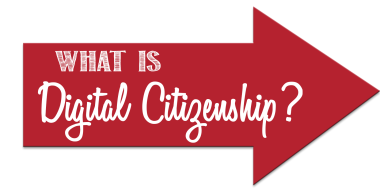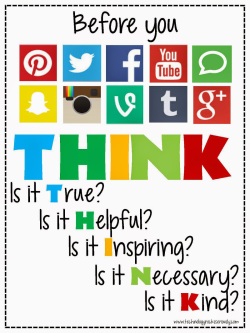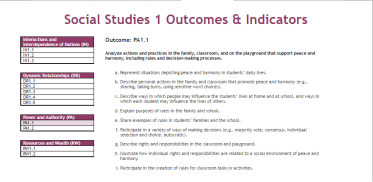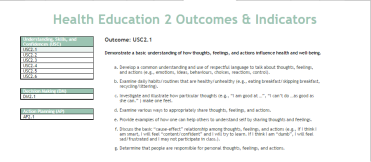Netiquette: What is it?

Digital Citizenship. Before last class, I had no idea that such a term existed. For those of you who were like me, having zero clue what digital citizenship meant, it is basically creating an awareness of what students are doing online in terms of appropriateness and responsibility. It looks into how we should act online, and discusses what we should be teaching youth about using technology.
What are the challenges around teaching digital citizenship in the classroom?
When I think of what challenges I will likely be faced with when teaching digital citizenship to students, I immediately think of digital etiquette as being that challenge. Digital etiquette (“netiquette”) is one of the nine themes of citizenship, and can be identified as the “rules” of how to behave responsibly and appropriately online. This includes how a student acts with not only texting and emailing, but how they interact with others on social media and videos games. The reason I see this as being such a challenge is because a great deal of students have had technology in their hands from a young age. Whether its having their own phone or Facebook account, or having access to play video games whenever they please, technology has been a central part of this generations lives from basically birth. Though this huge number of students has had access to technology for years, I wonder how many of these students have actually had a discussion with their parents about their digital etiquette?
“Our kids are growing up on a digital playground and no one is on recess duty.” – Kevin Honeycutt
As digital etiquette is such a broad topic, I decided to create a list of the challenges I think I will face in teaching students about digital etiquette:
Challenge #1: Yes, Video Games require Digital Etiquette: I think getting through to students that how they portray themselves and act while playing video

games, does in fact, matter. You will often see on tv young boys playing violent video games, and having banter back and fourth following these graphic plays. Educating students that how they communicate with other, even through video games, requires a degree of appropriateness, will definitely be a challenge.
Challenge #2: If you wouldn’t say it in person, don’t say it online: Another aspect of technology that seems to have missed a large portion of the generation, is the idea that they are able to say whatever they want by using technology, and somehow think it has no relation to their actual lives. Many are under the impression that they are safe behind the anonymity of a screen name, or that they can say whatever they want as its not face to face. Discussing cyber bullying in class is a huge reality of today’s society, and one that should be addressed and taken seriously. Students need to understand that what they say over technology does have consequences in their real lives.
Challenge #3: What may be appropriate for one situation, may not be appropriate for all: I think another huge challenge about educating students on digital etiquette is the appropriate aspect, looking at what is appropriate and when. As the cellphone usage has blown up over the last few years, a new language of texting lingo has been developed and is widely used by many cellphone users. Educating students on how the language you use to text a friend, may not be appropriate language to use when emailing a teacher is another topic we need to discuss.
I found this video on Digital Etiquette, and I think it would be a great way to introduce your students to the idea in the classroom!
How do you see digital citizenship fitting into the curriculum?
When you think of cyber bullying or appropriateness online, you typically think of this discussion happening with middle school children. But as a a future elementary teacher, I know many of my grade 2 students in my internship class had access to video games, or even had their own cellphones or iPods. These students also often used websites that allowed them to create usernames and interact with others in the class. This had me thinking- you are never too young to learn about digital citizenship. So instead of looking for the typical ways to address digital etiquette with older students, I decided to stick to my elementary background and see what I could find for addressing it with younger students.
As I did my internship in grade 2, I decided to start my search  there. I thought the best ways to discuss it would be in health unit looking at thoughts, feelings, and actions. As the indicators have students develop respectful language to share their feelings as well as examine various ways to demonstrate their feelings. This language was similar in social, looking at respecting others. I think these units would provide great opportunities to discuss ways of politely disagreeing with someone, and ways you can voice your own opinion in a respectful way (looking at arguments on Facebook or Twitter, and how to respectfully voice disagreement, instead of these common fights).
there. I thought the best ways to discuss it would be in health unit looking at thoughts, feelings, and actions. As the indicators have students develop respectful language to share their feelings as well as examine various ways to demonstrate their feelings. This language was similar in social, looking at respecting others. I think these units would provide great opportunities to discuss ways of politely disagreeing with someone, and ways you can voice your own opinion in a respectful way (looking at arguments on Facebook or Twitter, and how to respectfully voice disagreement, instead of these common fights).
I learned a lot about digital citizenship in the classroom, and I hope this post got you thinking about digital citizenship, too!
Thanks,
– S
February 15, 2017 at 5:01 pm
Hey Sarah! I liked how you tied Digital Citizenship into curriculum outcomes in this blog post! It is great to see how it ties in with what we are teaching. Thanks for sharing!
LikeLike
February 15, 2017 at 7:38 pm
Thanks Becca! It is much easier to tie Digital Citizenship into the curriculum than I thought- super simple to talk about in class!
LikeLike
February 16, 2017 at 4:09 pm
I think it is so important that we tie in digital citizenship with the curriculum as a whole. As a social studies teacher, I feel like we should be helping our students become great citizens, and that includes interactions online! Great post!
LikeLike
February 21, 2017 at 9:33 pm
Thank- you, Robbi! I agree, we should do our best to fit digital citizenship into all aspects of the curriculum- as I was searching, it was much easier to fit in than I thought!
LikeLiked by 1 person
February 23, 2017 at 6:43 am
Agreed! Sometimes it just takes a little extra time and it goes a long way to benefit our students!
LikeLike
April 7, 2017 at 10:00 pm
[…] of what exactly educational technology is and why it is so important. In this class I learned about digital citizenship and why it is so important to educate our students on the topic. I learned about PLNs and how to be […]
LikeLike